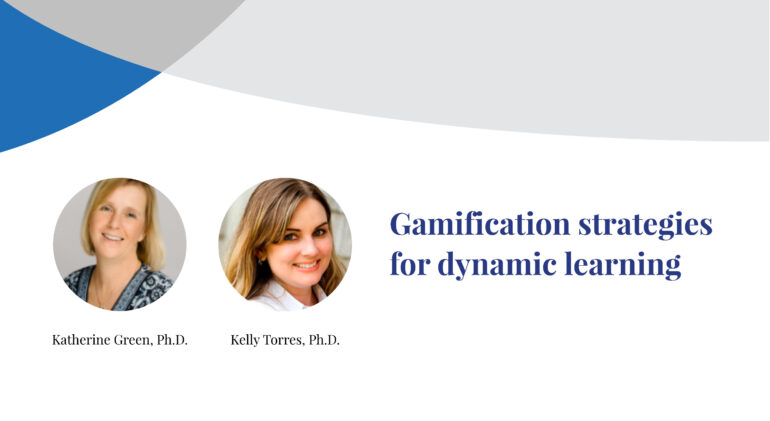Kelly Torres, Ph.D., and Kate Green, Ph.D., of the Educational Psychology & Technology Department, recently presented a webinar for the Insight Klett Program focused on gamification strategies. In their interactive presentation, Drs. Torres and Green examined the world of gamification and showcased how it can transform learner engagement, employee performance, and motivation. Gamification, the incorporation of game elements and principles into non-game contexts, holds significant importance in various educational and organizational settings. Gamification can be used to teach complex subjects, improve critical thinking, and enhance problem-solving skills, all while maintaining the attention and enthusiasm of young learners.
In K-12 education, gamification can transform traditional teaching methods by making learning more engaging and interactive. By introducing elements like rewards, challenges, and competition, gamification approaches motivate students to participate actively in the learning process. Within the realm of higher education, the benefits of gamification are equally profound. College and university-level courses can become more student-centered and experiential, providing opportunities for hands-on learning, collaboration, and immediate feedback. Gamified elements such as leaderboards, badges, and immersive simulations foster a sense of achievement, making the learning experience more enjoyable and reinforcing student commitment to their studies. Organizational settings also incorporate gamification elements to enhance employee engagement, training, and performance. By implementing game mechanics like point systems, challenges, and recognition, companies motivate employees to improve their skills, meet targets, and contribute to a positive workplace culture. Particularly, gamified training programs are often considered more effective than traditional methods since they provide immediate feedback and encourage employees to take initiative in their own professional development.
Gamification is a powerful tool that can revolutionize educational and organizational environments. It motivates participants, fosters engagement, and enhances the overall experience. The versatility of this approach allows for customization to meet the specific needs and goals of learners or employees, ultimately resulting in improved learning outcomes and increased performance. Specifically, gamification goes beyond surface-level engagement and taps into the innate desire for achievement and progress, fostering a deeper connection between learners and content. The power of gamification is in its adaptability and versatility, which allows it to cater to the unique needs and goals of learners whether they are K-12 or college students or employees in a professional setting.

